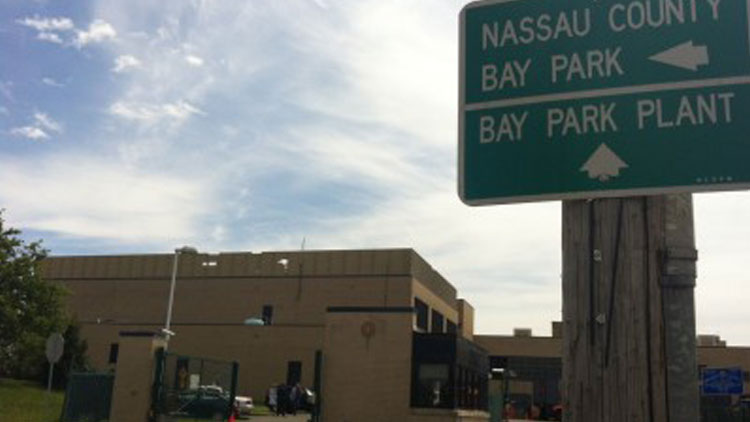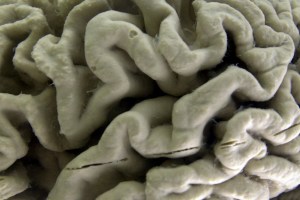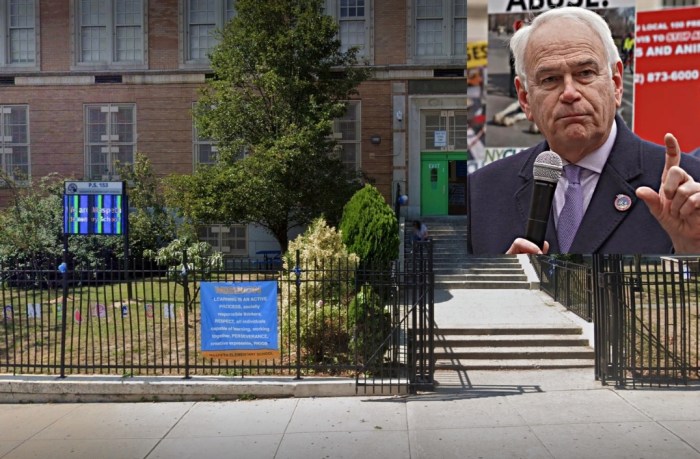New York State is committing $150 million for a nitrogen removal system at Bay Park Sewage Treatment Plant in East Rockaway after all.
The announcement by Jon Kaiman, Gov. Andrew Cuomo’s storm recovery advisor on Long Island, comes one day after four Nassau County legislators, including Presiding Officer Norma Gonsalves (R-East Meadow), called on the state and federal government to secure the already-promised federal funding, which was absent from this year’s state budget proposal. The funding is critical, lawmakers and scientists say, to better treat the effluent that is discharged from Bay Park into Reynolds Channel daily. Nitrogen in the effluent is harmful to the all-important marshlands, which act as natural barriers and protect shorelines from erosion.
“We are aware and we have been concerned about the Reynolds Channel sewage situation and the impact we face and the community faces and the region faces based on how that sewage ultimately is dispensed after its been treated,” Kaiman told reporters. “The ultimate goal from New York Offices of Storm Recovery and the state of New York and ultimately Nassau County is to rebuild Bay Park.”
The funding had been approved last year as part of a Community Development Block Grant through the US Department of Housing and Urban Development.
Mangano thanked Cuomo for reaffirming his commitment to Nassau, and said the Department of Public Works would go ahead and include the nitrogen removal system as part of its rebuilding plan. The funds, however, have yet to be released.
“This $150 million will go far to continue our efforts to clean up the western bays,” Mangano said. “In this day and age, we should not be dumping treated effluent into the bays. We already know that affects residential recreation opportunities in those bays, it affects fishing, it affects the commercial boating industry and now is the time to make this investment.”
Although the county has already received more than $800 million to rebuild and harden the plant, which was knocked offline by Sandy in 2012, both Mangano and Kaiman called on FEMA to reconsider last year’s request for an estimated $550 million ocean outfall pipe, which would dump effluent away from local waterways.
Gonsalves, in a statement, also urged FEMA to act.
“Given the vital economic engine that Nassau is for the state and federal governments, we are prepared to fight for our fair share of funding,” said Gonsalves, who still intends to hold a hearing on the matter in the coming weeks.
Additionally, New York State Department of Environmental Conservation Commissioner Joseph Martens and Jamie Rubin, director of the Governor’s Office of Storm Recover, penned a letter to FEMA outlining why an outfall pipe is critical to the future of Nassau.
Because the effluent discharged from Bay Park “causes violations of state and federal Clean Water Act standards pre-dating Superstorm Sandy,” the project is critically important to coastal communities in the county, the letter states.
The letter notes that Bay Park contributes more than 80 percent of the nitrogen discharged into the Western Bays. The state argues that if FEMA sits on the sidelines, the loss of marshlands due to nitrogen pollution will increase storm damage and future FEMA payouts if another major storm batters the Island.
FEMA is sticking to previous remarks it made last year in its rejection letter.
“FEMA has approved more than $800 million for the Bay Park Sewage Treatment Plant, including $427 million in repairs and $383 million in mitigation funding to ensure it is rebuilt stronger and more resilient against storms,” FEMA spokesman Mike Wade said in a statement. “The Bay Park Sewage Treatment Plant ocean outfall pipe project is not eligible for FEMA public assistance funding because such an outfall pipe did not exist when Hurricane Sandy hit in October 2012. Therefore, federal law prohibits spending FEMA funds on such an endeavor.”
Letter from New York State to FEMA:



























